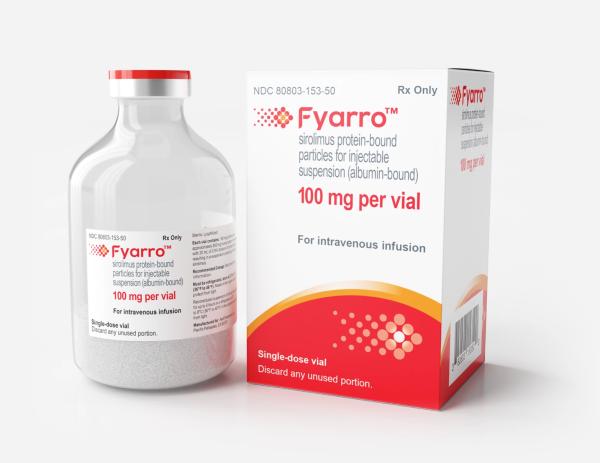Sirolimus protein-bound and Alcohol/Food Interactions
There is 1 alcohol/food/lifestyle interaction with sirolimus protein-bound.
Sirolimus Protein-Bound Food/Lifestyle
Moderate Food Interaction
Grapefruit juice may increase the blood levels of sirolimus protein-bound. However, this has not been studied, and it is not known to what extent grapefruit juice may interact with sirolimus protein-bound. High blood levels of sirolimus protein-bound can increase side effects such as mouth sores and inflammation, nausea, diarrhea, vomiting, abdominal pain, decreased appetite, increased blood sugar, rash, hair loss, lung or breathing problems, and impaired bone marrow function resulting in low numbers of different types of blood cells. You may also be more likely to develop anemia, bleeding problems, or infections due to low blood cell counts. The manufacturer recommends avoiding grapefruit and grapefruit juice during treatment with sirolimus protein-bound. Talk to your doctor if you have any questions or concerns. It is important to tell your doctor about all other medications you use, including vitamins and herbs. Do not stop using any medications without first talking to your doctor.
Switch to professional interaction data
Sirolimus protein-bound drug interactions
There are 416 drug interactions with sirolimus protein-bound.
Sirolimus protein-bound disease interactions
There are 4 disease interactions with sirolimus protein-bound which include:
More about sirolimus protein-bound
- sirolimus protein-bound consumer information
- Check interactions
- Compare alternatives
- Side effects
- Dosage information
- During pregnancy
- Drug class: mTOR inhibitors
- En español
Related treatment guides
Drug Interaction Classification
| Highly clinically significant. Avoid combinations; the risk of the interaction outweighs the benefit. | |
| Moderately clinically significant. Usually avoid combinations; use it only under special circumstances. | |
| Minimally clinically significant. Minimize risk; assess risk and consider an alternative drug, take steps to circumvent the interaction risk and/or institute a monitoring plan. | |
| No interaction information available. |
See also:
Further information
Always consult your healthcare provider to ensure the information displayed on this page applies to your personal circumstances.


